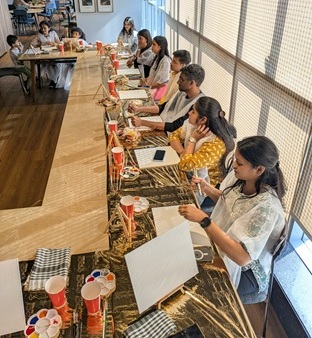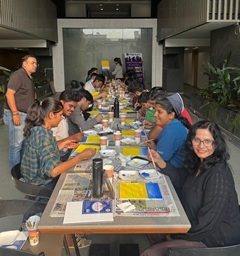A true Punekar carries the weight of history and tradition on their head with the Puneri Pagadi

Puneri Pagadi is a traditional Marathi headgear that has been a part of Pune’s culture for many centuries. The Pagadi is an essential accessory for Maharashtrian men, especially during weddings and other important occasions. The Puneri Pagadi has a unique style and shape that distinguishes it from other traditional headgears in India. Puneri Pagadi has received the Geographical Indication (GI) tag.

Puneri Pagadi is considered to be a modern version of Chakribandh. The Puneri Pagadi was first worn by Justice Mahadev Govind Ranade, also known as ‘Nyayamurti Ranade’, in the 18th century to show support for social reform. Lokmanya Tilak later popularized the idea of wearing the Pagadi, and it became an essential accessory for scholars, lawyers, and the wealthy. The Puneri Pagadi gained popularity in recent times after it was featured in the Marathi play called Ghashiram Kotwal.
The Puneri Pagadi is a symbol of pride and honor for the people of Maharashtra. It is made up of cotton or silk fabric, which is draped around a cap made of a thin layer of cotton or sponge. The Pagadi has a unique shape, which resembles a turban but is different from it. It is typically five to six feet long and four to six inches wide, and it takes great skill and patience to tie it properly.
The Pagadi is an integral part of Maharashtrian culture, and it is often associated with bravery and valor. The Maratha warriors used to wear the Pagadi during battles, and it became a symbol of their courage and strength. The Pagadi also has a religious significance, and it is worn during various Hindu rituals and ceremonies.
The Puneri Pagadi has evolved over the years, and today, it is available in a variety of styles and designs. The traditional Pagadi is plain and simple, but modern versions come in different colors, patterns, and embroidery. The Pagadi is often embellished with pearls, beads, and other decorative materials to make it more appealing.
Tying a Puneri Pagadi is an art, and it takes years of practice to master it. There are various ways of tying a Pagadi, and each style has its unique significance. The most popular style is the Shela Pagadi, which is worn during weddings and other festive occasions. The Shela Pagadi is tied in such a way that it resembles a crown, and it is considered a symbol of prosperity and good luck.

Create, Connect, Collaborate!
